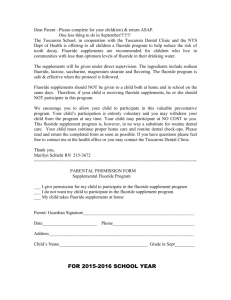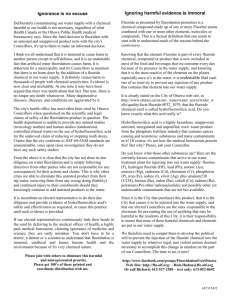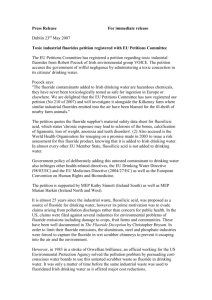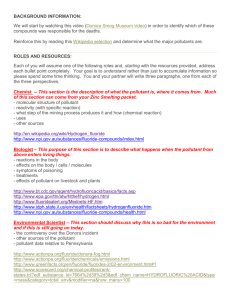Einstein`s 1939 Letter to Roosevelt
advertisement
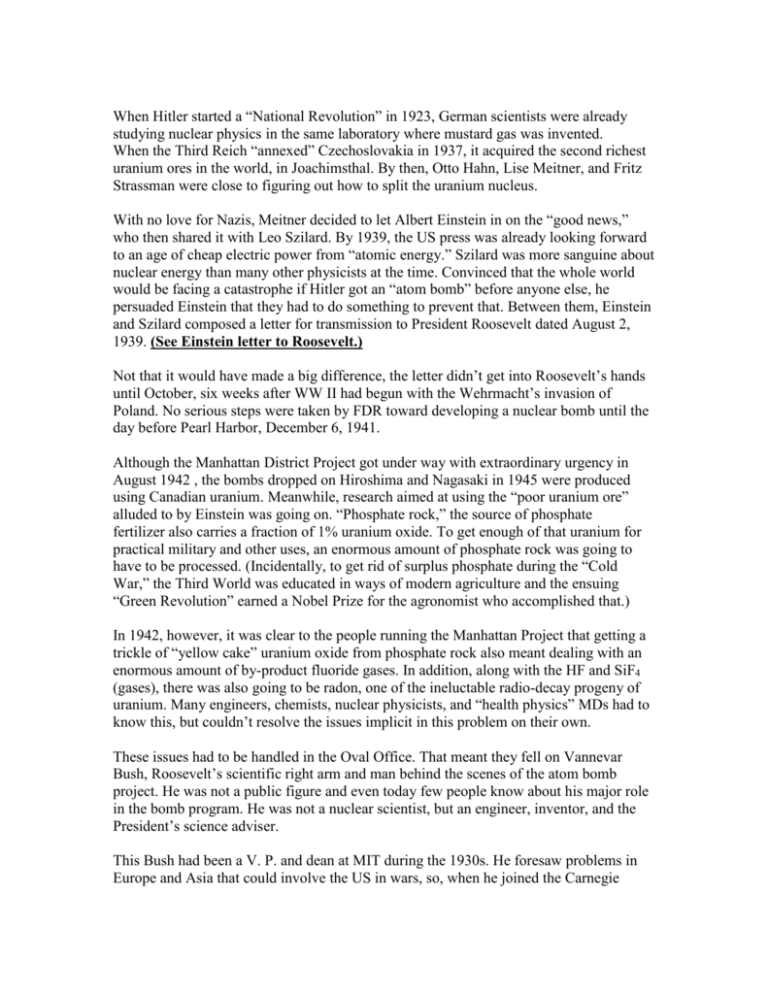
When Hitler started a “National Revolution” in 1923, German scientists were already studying nuclear physics in the same laboratory where mustard gas was invented. When the Third Reich “annexed” Czechoslovakia in 1937, it acquired the second richest uranium ores in the world, in Joachimsthal. By then, Otto Hahn, Lise Meitner, and Fritz Strassman were close to figuring out how to split the uranium nucleus. With no love for Nazis, Meitner decided to let Albert Einstein in on the “good news,” who then shared it with Leo Szilard. By 1939, the US press was already looking forward to an age of cheap electric power from “atomic energy.” Szilard was more sanguine about nuclear energy than many other physicists at the time. Convinced that the whole world would be facing a catastrophe if Hitler got an “atom bomb” before anyone else, he persuaded Einstein that they had to do something to prevent that. Between them, Einstein and Szilard composed a letter for transmission to President Roosevelt dated August 2, 1939. (See Einstein letter to Roosevelt.) Not that it would have made a big difference, the letter didn’t get into Roosevelt’s hands until October, six weeks after WW II had begun with the Wehrmacht’s invasion of Poland. No serious steps were taken by FDR toward developing a nuclear bomb until the day before Pearl Harbor, December 6, 1941. Although the Manhattan District Project got under way with extraordinary urgency in August 1942 , the bombs dropped on Hiroshima and Nagasaki in 1945 were produced using Canadian uranium. Meanwhile, research aimed at using the “poor uranium ore” alluded to by Einstein was going on. “Phosphate rock,” the source of phosphate fertilizer also carries a fraction of 1% uranium oxide. To get enough of that uranium for practical military and other uses, an enormous amount of phosphate rock was going to have to be processed. (Incidentally, to get rid of surplus phosphate during the “Cold War,” the Third World was educated in ways of modern agriculture and the ensuing “Green Revolution” earned a Nobel Prize for the agronomist who accomplished that.) In 1942, however, it was clear to the people running the Manhattan Project that getting a trickle of “yellow cake” uranium oxide from phosphate rock also meant dealing with an enormous amount of by-product fluoride gases. In addition, along with the HF and SiF4 (gases), there was also going to be radon, one of the ineluctable radio-decay progeny of uranium. Many engineers, chemists, nuclear physicists, and “health physics” MDs had to know this, but couldn’t resolve the issues implicit in this problem on their own. These issues had to be handled in the Oval Office. That meant they fell on Vannevar Bush, Roosevelt’s scientific right arm and man behind the scenes of the atom bomb project. He was not a public figure and even today few people know about his major role in the bomb program. He was not a nuclear scientist, but an engineer, inventor, and the President’s science adviser. This Bush had been a V. P. and dean at MIT during the 1930s. He foresaw problems in Europe and Asia that could involve the US in wars, so, when he joined the Carnegie Institute in 1939, he was a strong advocate of military r/d. He was sure that the events in Europe required the US to prepare for war with strong collaboration between US military, industrial, and scientific resources. In 1940, he had a meeting with President Roosevelt and proposed the creation of an organization to accomplish that objective. The National Defense Resource Committee (NDRC) was formed with Bush at the helm and Roosevelt’s main military research expert. By 1941 Bush was convinced that the U.S. had to develop an atomic bomb promptly or Hitler would do so first. The idea was supported by other scientists, including some from Great Britain who also thought the job could be done reasonably quickly. In late 1941 FDR authorized launching the Manhattan District Project with all deliberate speed. The first source of uranium would be rich ore in Canada, but Bush knew the US would sooner or later have to use the phosphate rock “low grade ore” Einstein had written about. While the army ran the Manhattan Project on Bush’s recommendation, he chaired the Military Policy Committee formed in Sept. 1942 to keep tabs on the Manhattan Project and resolve its issues. His suggestions were delivered directly to FDR. Being an engineer, Bush knew that using phosphate rock as the source of uranium required finding a way to dispose of the gaseous fluoride by-products laced with radon. Enter Edward Bernays, nephew of Sigmund Freud. He was already known as the “Father of Public Relations” who called his methods of persuasion “the engineering of consent.” With his wife as a partner, he did PR for Time magazine, CBS, NBC, GE, GM, United Fruit Company, and Westinghouse. They also advised such clients as Enrico Caruso, Samuel Goldwyn, Thomas Edison, Eleanor Roosevelt, Henry Ford and presidents of the United States from Coolidge through Eisenhower. Bernays obviously had the confidence of FDR. It is almost certain that he was not alone in hatching the “Bait and Switch” plan to dispose of the fluoride waste product called fluosilicic acid that went into effect in 1945. There was no way the project could have been inaugurated without Oval Office involvement and it had to be camouflaged in the most plausible possible way. What better way than to promote the use of fluosilicic acid as a health promoting substance as the “bait?” Teach the public that ingested “fluoride” is good for teeth. Start by using sodium fluoride, a compound that had seen at least some testing done on animals to show they could tolerate very low dosage. Refer only to “fluoride” and sneak in “fluoride is fluoride is fluoride” whenever someone asked what compound was being used. Get such remarkable declines in tooth decay from ingesting 1 ppm of fluoride in drinking water in only two years that it was not necessary to complete a “planned” ten-year human experimental exposure project. Make sure every dentist and state Dental Officer is lined up as promoters of the benefits of water fluoridation and pooh-pooh any critics as uninformed boobs, or...worse yet...conspiracy nuts. Quietly slip fluosilicic acid into water in remote Idaho in 1947 and then in small Wisconsin towns. In short order (by 1950), get the US Public Health Service to make the case for switching from NaF to fluosilicate to reduce the cost of fluoridation. (Using the PHS own figures, the savings from making the switch was 4 cents per community resident per year.) The US PHS had no knowledge about mammal health effects from chronic ingestion of fluosilicate treated water other than a 1935 report of studies of the Ohio Veterinary Service. Rats teeth and bones absorbed the same amount of fluoride from NaF and SiF treated water and grew at the same rate. However, excess ingested fluoride was metabolized differently. More of the excess from the fluorosilicate was eliminated in urine than the excess from sodium fluoride. This meant that more of the excess “fluoride” had to have entered the bloodstream and reach soft tissues before being eliminated. But never admit there may be different biochemical effects from chronic ingestion of water treated with sodium fluoride and fluosilicate: “Fluoride is fluoride is fluoride.” Both the proponents and opponents of dosing potable water with “fluoride” have been intoning that mantra for sixty years. But they are wrong. (See Westendorf thesis information). In 1999 an EPA Assistant Administrator admitted in writing to the Chairman of a House sub-committee on the environment that the EPA knew of no tests for health effects of ingested fluosilicates. Today, the NTP is supposed to be doing such studies pursuant to the 2002 nomination” of silicofluoride (AKA fluosilicate) for animal testing. However, whether this work is under way or not, it may be too late to save the reputations of the CDC and NTP. (See the Bassin thesis information). Apart from missing the boat on potential health damage from ingesting water treated with a commercial grade of a latent toxin, both the EPA and CDC have been lost in the woods on issues pertaining to lead corrosion products extracted from plumbing and consequent increased absorption of lead from drinking fluoridated water. (See the Maas information on lead corrosion and related items). Perhaps the most timely item, however, is the article written by a former CDC employee with several current CDC employees and published by the NIEHS in 2003. Macek et al rely on a statistical approach fraught with non sequiturs to refute work showing that silicofluoride treated water increases children’s blood lead burden. (See the Macek et al article and the critique referring to it.)


